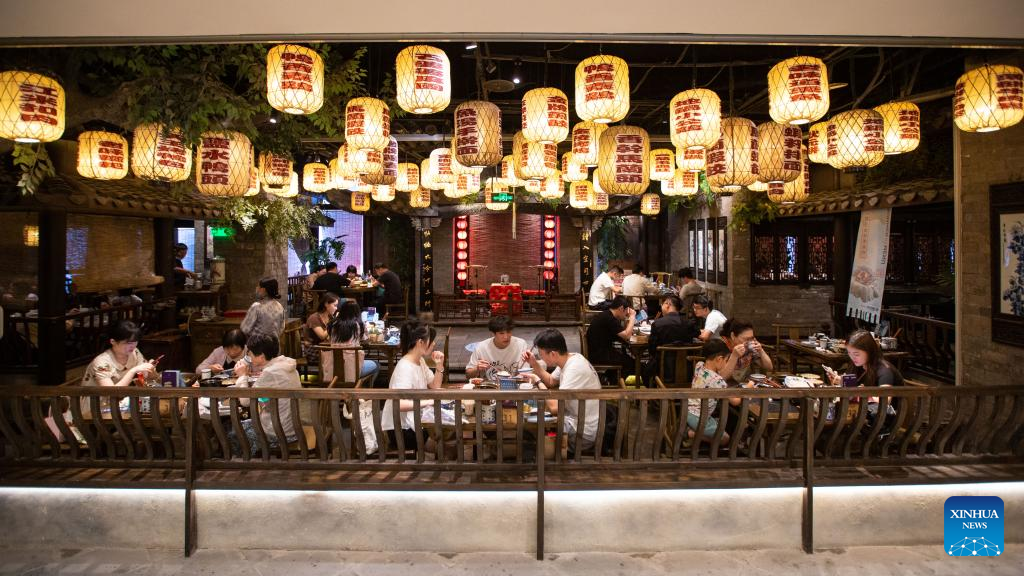
By Steve Barnett
China's economic development is remarkable. The economy took off rapidly after the reform and opening-up in 1978, and has experienced nearly double-digit annual growth rates for more than three decades.
Performance over the past decade
China has also done well in the most recent decade. Focusing on 2012-2021 — the period after the Global Financial Crisis in 2008 — China continued to outperform by most metrics.
The country is still growing rapidly. Its average annual GDP growth was 6.7 percent, more than twice the global average of 3.1 percent. China is the world's second largest economy. Using purchasing power parity (PPP) weights, China's share of global output increased from 15 percent (2012) to 18.6 percent (2021), which is slightly larger than the United States (15.7 percent).
China accounted for an estimated one-third of global growth. On average, during this period, the country contributed more than 30 percentage points to global growth. This is the most of any country during the same period.
The country boosted its people's living standards. One way to measure this is to compare China's GDP per person to that of advanced economies, again using PPP weights. The GDP per person in China converged from around 60 percent of that of world economies to around 103 percent.
Lessons for the domestic economy
China's economic success is not, as sometimes claimed, a growth miracle. It's the outcome of years of economic reforms that relied on unleashing market forces, and of active macro-economic management to smooth out business cycles. Going forward, more of the same is required.
Although in the near term, China faces considerable economic headwinds, over the medium term, China can still grow at a robust and sustainable pace. Success, as before, does not require a miracle but with continued reforms to unleash the potential of the market to efficiently allocate resources.
Going forward, a key aspect of sustainability would be to shift the growth pattern. One shift is to have productivity gains replace capital accumulation as a growth driver. Further market-based reforms can foster this shift by encouraging resources move to the more productive uses (across industries) — such as the shift of labor from farms to factories in the 2000s — or technology upgrading to use existing resources better (within industries). The latter includes strengthening the system of a firm exit; the departure of unproductive firms can make room for new and more dynamic firms to enter.
Another shift is to pivot toward greater reliance on consumption. As with growth, China has witnessed remarkable progress in consumption. Real consumption per person in China has grown much faster than any other large economy over the past decade. Nonetheless, it has not kept up with its GDP growth. A rebalancing toward consumption can be achieved by both increasing labor's share of income (such as by pivoting the economy toward services) and reducing household savings (such as by strengthening the social safety net).

A restaurant during the Mid-Autumn Festival holiday in Nanjing, east China's Jiangsu Province, September 11, 2022. [Photo/Xinhua]
A shift toward consumption has another important benefit: It can contribute greatly to achieve China's climate goals. Consumption is generally less polluting than investment.
China's global role
As China's share of global output has risen, so has its role in the global economy. At the International Monetary Fund (IMF) over the past decade, China's quota share in the IMF rose (it is the fund's third-largest shareholder); the Chinese yuan entered the Special Drawing Rights basket of currencies (joining the U.S. dollar, euro, Japanese yen, and UK pound); and a Chinese national has served as part of the IMF's five-person management team.
Over the past decade, China has emerged as a crucial player in providing more financing to developing countries. Beijing is a large creditor with an important role to play in providing debt relief when necessary — and 60 percent of low-income countries are in or at high-risk of debt distress. The establishment, with China's support, of the G20 Common Framework to support debt resolution for low-income countries was a welcome step. The priority is to provide relief faster and make more predictable outcomes.
Last but not least, China's large economy makes it a key player in tackling climate change. China's climate goals to achieve carbon peak before 2030 and neutrality before 2060 are highly appreciated. Achieving these goals, and ideally surpassing them, can secure the well-being of the current and future generations.
Additionally, China's economic track record is impressive. Going forward, by growing robustly, sustainably, economically and eco-friendly, China can both continue to raise living standards at home and to provide welcome support for meeting global demand.
The author is the International Monetary Fund's Senior Resident Representative for China.

 中文
中文



